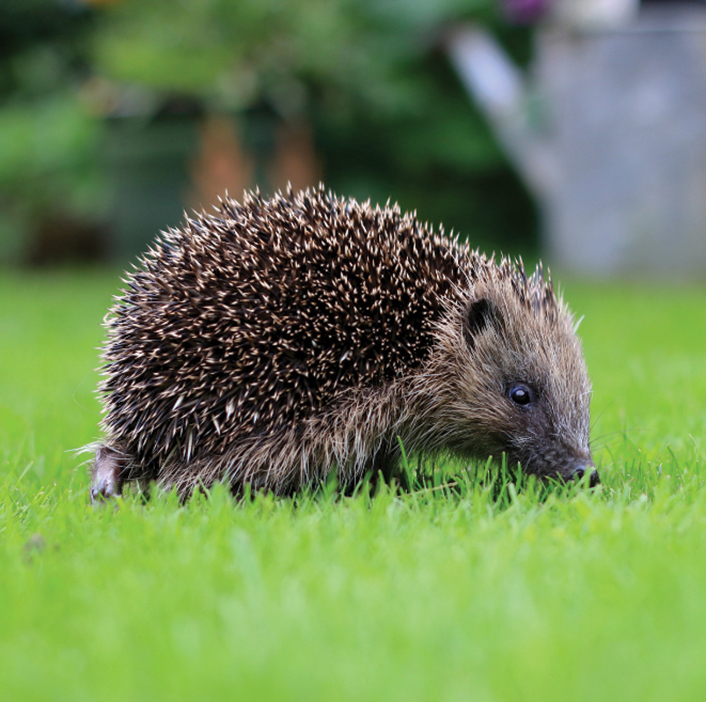- Home
- News, Articles & Reviews
We are hiring! Please click here to join our growing magazine delivery team in Gloucestershire!
Areas
Pets & Wildlife
Archive

Wildlife gardening on a budget
All Areas > Pets & Wildlife > Wildlife Matters
Author: Sophie Wootton-Lee, Posted: Tuesday, 23rd May 2023, 09:00
It doesn’t have to cost the earth to make a wildlife-friendly garden. In fact, the less money you spend the better for your pocket, wildlife and the planet! Check out our hints and tips for budding wildlife gardeners.
Easy wins
Grow from seed
Pollinator-friendly favourites like cosmos and sunflowers are easy to grow. Use peat-free compost and keep them indoors until they’re growing strongly, then plant out in early summer.
Be less tidy
We all want our gardens to look sharp, but is there an area you could leave to grow wild? Let a corner of your lawn grow longer, allow some leaves to pile up, and let self-seeding plants grow freely somewhere in your garden.
Grow your own bird food
We all know how important it is to feed the birds (and provide them with fresh water) all year round. Avoid cutting back seed-bearing plants like lavender, knapweed, grasses and sunflower, and watch the birds flock to feed from them.
Introduce water to your garden
Even a small pond can support a wealth of species. If you don’t have room for a pond, a washing-up bowl will work. Sink the bowl into the ground and use natural materials such as untreated wood or stones to create a ramp. Make sure it’s surrounded by plants and add a bag of supermarket watercress to provide cover in the pond.
Go chemical free
Avoid using pesticides and find natural solutions to unwanted minibeasts instead. The most impactful solution is to have plenty of variety, so no one species can gain control. Learn more about the natural ways of controlling pests – you’ll be surprised!
Species you might spot
Hedgehogs
Known as the gardener’s best friend (because they eat minibeasts like slugs) these garden favourites will soon be heading out after a winter of hibernation. Encourage them into your garden by making a small hole – the size of a CD – in your boundary fence or under your garden gate.
Frogs and toads
If you’ve got water in your garden, you may have spotted frogspawn and tadpoles during the spring. It’s worth encouraging these amphibians, as they also love a diet of slugs and snails.
Buff-tailed bumblebees
The biggest of the bumblebees, these pollinators emerge in early spring. They’re named after the buff-coloured tail of their queen and love all types of flower, but especially open, daisy-like varieties where they can reach the nectar with their short tongues.
Looking for more inspiration?
Check out Gloucestershire Wildlife Trust’s Wilder Glos platform – an online space full of brilliant ideas for your wild garden and your wildlife! Visit gloucestershirewildlifetrust.co.uk/wilderglos to find out more.Other Images
Copyright © 2025 The Local Answer Limited.
Unauthorized use and/or duplication of this material without express and written permission from this site's author and/or owner is strictly prohibited. Excerpts and links may be used, provided that full and clear credit is given to The Local Answer Limited and thelocalanswer.co.uk with appropriate and specific direction to the original content.More articles you may be interested in...


© 2025 The Local Answer Limited - Registered in England and Wales - Company No. 06929408
Unit H, Churchill Industrial Estate, Churchill Road, Leckhampton, Cheltenham, GL53 7EG - VAT Registration No. 975613000You are leaving the TLA website...
You are now leaving the TLA website and are going to a website that is not operated by us. The Local Answer are not responsible for the content or availability of linked sites, and cannot accept liability if the linked site has been compromised and contains unsuitable images or other content. If you wish to proceed, please click the "Continue" button below:




